- Home
- Farley Mowat
The Farfarers Page 2
The Farfarers Read online
Page 2
I asked Zachareesi who had built this useful beacon and when. He grinned and waved his stubby pipe-stem to the north.
Zachareesi stands beside what is probably intended as a Christian cross, beside the Payne River in Ungava.
“Old-time people. Not Inuit anyhow.”
The canoe was in imminent danger of being left high and dry by the receding waters, so we pushed off and in a little while reached Pamiok Island.
This barren mound of sea-wracked rock facing the swirling fogs of Ungava Bay could hardly have seemed less inviting. Seen through a scud of driving mist and rain, it appeared to be a singularly inhospitable place. But appearances were deceptive. Situated close to the mouth of a major river route to the interior caribou country, convenient to bird islands, walrus haul-outs, and excellent sealing grounds, it had been the chosen home of countless generations of human beings.
However, when our canoe nosed up on Pamiok’s stony shore, we found the island inhabited by only two people: Thomas Lee and his teenage son, Robert. Their home was a squat tent, struggling to keep a grip on the ground in the teeth of a stiff easterly wind pelting in over the icy waters of the bay.
Lee waded out through the fringe of kelp to greet us. He was then fifty-one years old and looked somewhat like a burly and grizzled barrenland bear graced with a round and ruddy face and a Roman nose.
He had no time to waste. I had barely introduced myself before he was leading me off to tour the island. Late that night I recorded my impressions.
At least this Godforsaken place has no mosquitoes! Too wet, cold, and windy for the little bastards. A corpse shroud of fog came rolling in as I stumbled after Lee across a jumble of shattered rocks and sodden muskeg. . . .
We came to a bunch of knee-high mounds of stones. “Tombs,” he told me cheerfully. “Look inside.” I bent down by one, peered through a crevice, and saw a jumble of what could be human bones, but no skull. “I collected the skull,” said Lee. “Perhaps it’s Eskimo, but I doubt it. I’ve found five skulls altogether and at least two are more European than Eskimoan. The others look in between.”
Almost every little hollow or more-or-less-level bit of ground on the island seems to have its stone tent ring, some of them twenty feet in diameter. There are also numerous depressions Lee said were the remains of semi-subterranean winter houses of ancient pre-Eskimo cultures.
Near the east end of the island we came to three cairns, cylindrical and about six feet high. They don’t look anything like the Eskimo inuksuak [stone men] I’ve seen all over the Arctic. I made the point to Lee and he agreed: “Yes, too big. Too regular. Too well made. Not Eskimoan at all. And look at the thickness of the lichen growth on them. They’re too old to belong to the historic period.”
We trudged back along the south shore. The tide had fallen so far that the sea was only distantly visible across a vast, glistening plain of jumbled rocks, boulders, and mud. Lee pointed out a sort of broad pathway or ramp running seaward from the high-tide line. Somebody had put in a hell of a lot of work clearing it of the worst of its jagged rocks. Again Lee ruled out natives: “No Eskimo would go to that much trouble to make a boat landing. They wouldn’t need to for kayaks and canoes. I think this must have been a haul-out for big boats.”
By now I was rain-soaked below the waist and sweat-soaked above. Whatever else he may be, Lee is a bloody dynamo. He trotted me into a bit of shelter behind a ridge of frost-shattered rock to the site he was digging.
Not very impressive. A muddy rectangle about forty-five feet long by maybe fifteen wide, with turf, moss, and stones stripped away to a depth of a few inches, at which point the diggers had hit bedrock. I could just make out the remains of some low stone walls. Lee waited about ten seconds for questions, then beat me to the punch.
Diana Island at the junction of Hudson Strait and Ungava Bay is dominated by a trio of tower beacons. The largest is the one in the foreground.
“This is some sort of longhouse. Not the kind the Six Nations and other Indians built in the south, but its own kind. There are three like it on Pamiok—two this size and one much larger. The Eskimos say there’re several more to the north. Nothing like them has ever before been described in Canadian archaeology.
“I’ve traced the outline of this one. See, it’s somewhat boat-shaped, with slightly curved sides and rounded ends. The walls were of stone and turf and low—four feet at most. I’ve found little in the way of artefacts except a lot of Dorset-culture [preEskimoan] litharge [scraps and flakes of flint], much of it on top of rotted turf from fallen walls. Dorsets seem to have camped here after this longhouse was abandoned.”
These are two views of Tom Lee’s speculative reconstruction of Longhouse No. 2, on Pamiok Island, near the mouth of the Payne River estuary in Ungava Bay.
Young Robert Lee had been busy making tea. He caught up to us and almost apologetically suggested his father and I might like to come to the tent for a warm-up.
“Not now,” Tom replied brusquely. “Too much still to show this man. Let’s look at the big house.”
He led me up an easy slope and I almost stumbled over the ruin before I saw it. Boulders, tumbled every which way, blended so well with the mess of other rocks, it needed to be pointed out to me. Then I could make out the shape of what looked like a tomb for Gargantua. It was at least eighty feet long, maybe twenty wide, and bloody massive!
Pamiok Longhouse No. 2 in plan. Although the original walls had collapsed, stones shown in solid black are believed to be in their original position.
In some places the walls still stood three feet high but were mostly broken down, with their boulders rolled into the central space. I say boulders because that’s what a lot of them were. Lee guessed some weighed more than a thousand pounds. All were coated with a layer of lichens that must have taken hundreds of years to grow.
Looking across this enormous jumble, Lee summed up his thoughts: “Difficult to believe this was built by Eskimoan people. What earthly reason would they have had? Eskimos may have sometimes pitched their tents inside these longhouses, and Dorset- and Thule-culture [palaeo-Eskimos] probably did the same. But I doubt any of them built these longhouses.”
“Then who did?”
He smiled quizzically. “Well, now, Mr. Mowat, I suppose that’s for me to find and you to ask. At this stage a cautious professional wouldn’t say. But I don’t think you’ll be surprised if I predict they’ll turn out to be Europeans. Possibly Norse.”
In the years ahead Tom and I became friends, exchanging findings and opinions. He supplied me with copies of his meticulously detailed archaeological reports. I gave him the results of my research into early Norse history. In 1967 he went back to Ungava and found an even larger longhouse on another island a few miles north of the Payne. He then returned to Pamiok and began an intensive investigation of the big house there. This dig required three seasons to complete and yielded remarkably little enlightenment in view of the enormous amount of time and energy Lee expended on it. Nothing emerged to satisfactorily explain its purpose or identify its builders. It remained an enigma comprising a number of mysteries.
One of these was how the Pamiok big house or, indeed, any of these Arctic longhouses, could have been roofed. Lee’s excavations (together with those undertaken in later years by other archaeologists on similar sites) have failed to produce evidence of roof supports, whether of wood or of such possible substitutes as whale bones. Furthermore, the nearest timber suitable for roof construction at the time they were built was at least 120 miles to the south of Pamiok, and 1,500 miles to the south of a group of similar longhouses found in the 1970s on the shores of Kane Basin in the high Arctic.
The roof question has bedevilled every archaeologist who has investigated it. Some have concluded the longhouses weren’t “houses” at all and so need never have been roofed. But, if not houses, what were they? The orthodox opinion seems to be that they served some kind of ceremonial or religious purpose; but there is no evidence to buttress such a hy
pothesis and, as we shall see, the distribution of the sites makes such an explanation inherently improbable.
Tom Lee would have none of it. He suspected the structures were temporary shelters built by Norse voyagers visiting the region around A.D. 1000. Indeed, ground plans of Norse croft houses of that period in Iceland, the northern British Isles, and parts of Scandinavia resemble these Canadian Arctic longhouses. All are long and narrow, often with slightly curved side walls. Proportions and dimensions are generally comparable. There the resemblance ends. Norse (including Icelandic) longhouses were invariably roofed, with sod, turf, bark, or thatch supported upon robust wooden frameworks which have, almost without exception, left archaeologically identifiable traces.
A number of years were to pass following my visit to Pamiok Island before the Arctic longhouses began revealing their mysteries to me. They first did so on the far side of the Atlantic Ocean.
It rained almost incessantly during the first visit of my wife, Claire, and me to Shetland. This cluster of treeless, windswept rocks off the northern tip of mainland Scotland, which, together with its sister archipelago of Orkney, comprises Britain’s Northern Isles, was living up to its reputation as a womb of bad weather.
We hardly cared. We had come to Shetland at the invitation of salmon farmer and antiquarian Alistair Goodlad, who had promised to immerse us in Shetland history until, as he inelegantly put it, “’tis coming out your orifices.”
Under Alistair’s guidance we sloshed our way to many ancient monuments, including five-thousand-year-old pit houses, recently excavated from under thick layers of peat; subterranean stone tombs of later mesolithic settlers; crumbled neolithic promontory forts; Bronze Age village sites; Iron Age broch towers; and the tumbled walls of Viking houses built a mere thousand years before our time.
Boat-roofed houses remain traditional with the Northern Islanders, as this modern home near Kirkwall, Orkney, testifies.
Shetland seemed to be a world of ruins, not all of them ancient. Croft house after croft house stood abandoned, slowly crumbling back into the land from which generations of pastoralists had raised them.
Alistair was savage about the empty crofts. “Modern times leave no room for the wee chap, be he fisherman or crofter. After five thousand years making a living on these islands his like has to get out of it now to make way for oil refineries and nuclear power stations. But that’s the way of a world gone witless, wouldn’t you say?”
We came across other curious things in the course of our wanderings. Along the eastern coasts of the islands of Yell and Unst stood several drystone beacon towers. Some were on headlands, but others were obscurely located near the bottoms of bays and inlets. They reminded me forcibly of those I had seen at, and near, Pamiok Island.
But what particularly captured my interest was a number of buildings roofed with overturned fishing vessels that had, presumably, outlived their seaworthiness. Some of the structures were lowly cattle byres and outbuildings; but others were, or had been, human habitations. One that we later saw on Orkney was fully modern, elegantly built of brick, and sporting two large picture windows staring out, wide-eyed, as it were, from beneath the beetling brow of a capsized wooden vessel that must have been sixty feet in length.
We learned from Alistair that it was an ancient island custom to convert ships that had served their time at sea to this final service. Many Shetlanders, he told us, had been “conceived, lived, and died under or in a boat.”
On the final day of our visit he took us up on the hogback of Yell to show us Fetlar, a smaller island seemingly adrift in a wind-whipped sea to the eastward.
“’Tis a weird wee world of its own out there. Supposedly the place the Old Ones held out the longest. There’s some believe they’re out there still, coming and going in ghostly boats from places the like of which we only get to see in dreams. . . .”
Shetland and Pamiok were but two steps along the tortuous path I would follow as I worked my way back in time. But telling the tale backwards as it actually unravelled is not the way the old story tellers would have done it. They always began at the beginning.
And so shall I.
PART ONE
THE OLD WORLD
CHAPTER TWO
FARFARER
The northern dawn breaks clear of fog and the tired young helmsman can just make out the loom of high land on the starboard bow. If this is Yell, he knows he has done his job and can be proud of himself, for it is no easy thing to hold a steady course when the stars are hidden and there is only the wind and the run of the seas to serve as guides.
A tousled, rough-bearded man emerges from the narrow confines of the cuddy in Farfarer’s bows. Seizing the forestay, he hauls himself into the eyes of the little ship and hangs there precariously, scanning the lightening horizon. Squinting at the stillindistinct land mass to starboard, he grunts in pleased recognition. He glances up at the broad belly of the big square sail. It is taut and pulling strongly in the fresh westerly. His gaze shifts aft, to where his son stands in the stern sheets, legs astride for balance, one arm on the tiller, the other pointing questioningly landward.
“Aye, lad, ’tis Yell!” the skipper shouts while relieving himself into the green waters foaming under his vessel’s forefoot. “Let her fall off a bit . . . there, that’ll do. If the breeze holds we’ll haul ashore on Fetlar tomorrow morn.”
He swings inboard, bends down, and reaches into the cuddy, where the rest of his crew of kinsmen slumber on. His fingers find a sack of dried cod. He pulls out two chunks and, balancing beside the swaying gunwale, makes his way aft and gives one to his son. The two men tear at the sun-hardened fish, savouring its strong taste, washing it down with swigs of water from a seal-bladder flask.
“Fresh mutton and hot bere bread tomorrow,” the skipper promises. “Aye, and then the long winter ahead for you to raise a little hell and make babies, if you can catch a girl. You’ve earned it . . . we’ve all earned it.” He chews reflectively for a moment. “All the same, by next spring you’ll be ready for the long beat westward, back to Tilli and the tuskers and the water bears. Well, I’ll take her now. Go forward and get some sleep.”
“Twenty times I’ve made this passage,” the skipper thinks, as he takes the tiller. “Twenty springs since first I saw Tilli’s big white skull on the horizon.... Could hardly believe the place, though I’d heard enough about it. Ice mountains with their heads in the clouds . . . stinking fountains of boiling water spouting out of the bowels of the earth....And tuskers so thick it put my heart in my mouth the first time I rowed in amongst them.”
He had made his first deep-water voyage soon after the birth of Christ. Barely thirteen, he had gone to sea, as was customary, in a vessel built, manned, and owned by his kinfolk.
Before that, at the age of ten, he had watched Farfarer being reborn on the shore of the sandy cove below the family steading on Fetlar, and could vividly remember how she had risen into being from the long keel timber of her previous incarnation.
She was fifty feet in length, with a beam of fifteen, her new ribs, gunwales, and thwarts shaped from oak and ash, and her stringers from pine battens, all fetched back to the treeless home islands by Fetlar trading men. It had taken fifteen full tusker hides each split in two, stitched together with sinew, to clothe the lightly built frame. The women had made the vessel’s big, loose-footed square sail out of thinly scraped and oil-soaked leather.
Much of her was new; but her core was old, for her keel had been the backbone of several successive predecessors, all bearing the same name. Her mast and yard had served for almost a century since being found by the skipper’s great-grandfather as driftwood washed ashore on Tilli. Nobody knew what kind of wood they were or from what unknown world they came, but the wood was tough as iron and resilient as whale baleen.
Now those same staunch spars were bringing the current Farfarer home again. The skipper eyed them fondly. His wife believed they were inhabited by spirits of great power. He smiled, thinking of
his wife; she was getting on now, but her welcome home would be as warm as ever.
NO EXAMPLES OF FARFARER’S BREED HAVE SURVIVED for they were built of perishable materials that could not long endure unless cared for by devoted hands. Her origins are lost in time, but it may be possible to throw some light on them.
The first-footers who arrived upon the northern coasts not long after the withdrawal of the glacial ice still maintain a presence there. Local people refer to them as “strand lopers,” which is to say, beach walkers. Winter storms are forever washing the sands away from beaches and dunes to reveal their ancient hearths and kitchen middens.
Fragments of charcoal and burned bits of clam shells have little to tell the casual passer-by; but if one is lucky enough to walk the shores of northern Scotland with someone as knowledgeable as Walter Mowat of John o’Groats, they speak in tongues.
Down on his knees just above the high-tide mark on the long beach of Dunnet Bay, Walter carefully sifted through a band of charcoal and calcined shells until he came upon a fragment of worked quartz. He held it out for my inspection.
“The last laddie to hold this wee bit of a stone knife would have been one of the strand lopers a good many thousand years ago.” He paused, looking intently at the broken artefact. “It almost makes me feel I’m touching the old chap’s hand myself.”
The ancient people who once camped along those northern beaches can still reach out and touch the present. They are by no means so distant as our glittering world of science and technology would have us believe. The first-footers are with us yet. And they have much to tell.

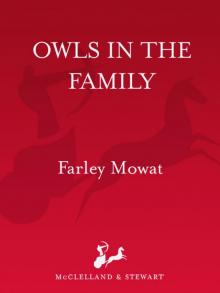 Owls in the Family
Owls in the Family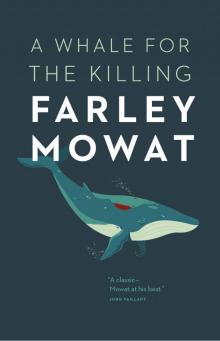 A Whale for the Killing
A Whale for the Killing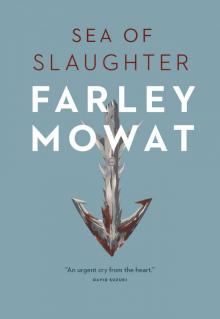 Sea of Slaughter
Sea of Slaughter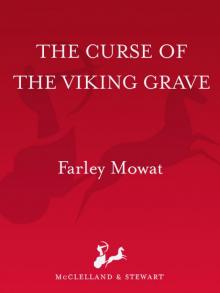 The Curse of the Viking Grave
The Curse of the Viking Grave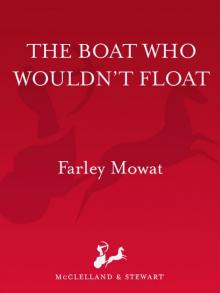 The Boat Who Wouldn't Float
The Boat Who Wouldn't Float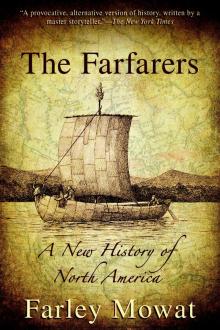 The Farfarers: Before the Norse
The Farfarers: Before the Norse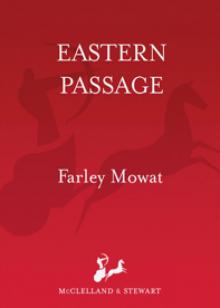 Memoir
Memoir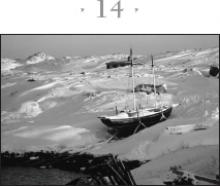 Bay of Spirits: A Love Story
Bay of Spirits: A Love Story The Black Joke
The Black Joke Sibir: My Discovery of Siberia
Sibir: My Discovery of Siberia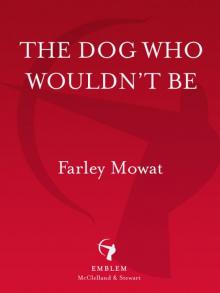 The Dog Who Wouldn't Be
The Dog Who Wouldn't Be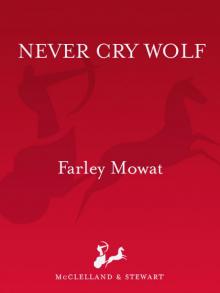 Never Cry Wolf
Never Cry Wolf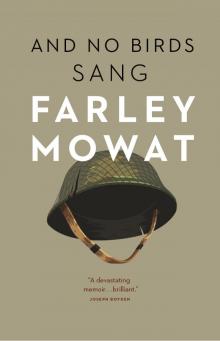 And No Birds Sang
And No Birds Sang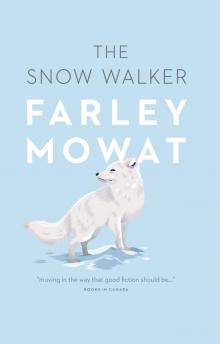 The Snow Walker
The Snow Walker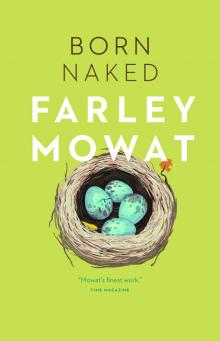 Born Naked: The Early Adventures of the Author of Never Cry Wolf
Born Naked: The Early Adventures of the Author of Never Cry Wolf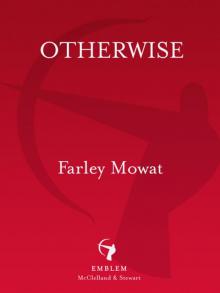 Otherwise
Otherwise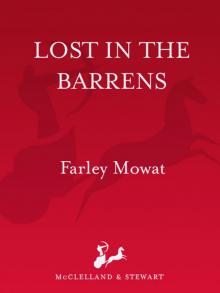 Lost in the Barrens
Lost in the Barrens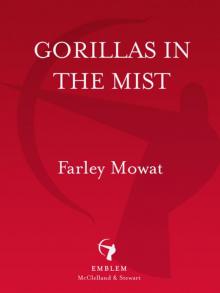 Gorillas in the Mist
Gorillas in the Mist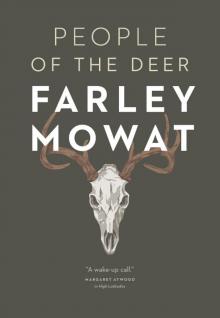 People of the Deer
People of the Deer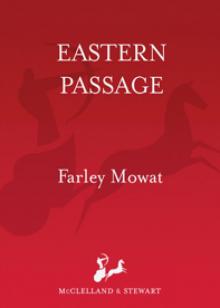 Eastern Passage
Eastern Passage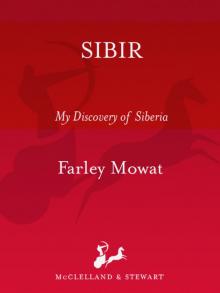 Sibir
Sibir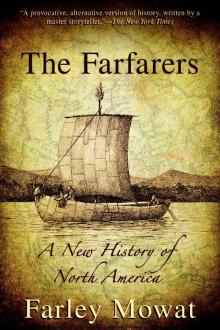 The Farfarers
The Farfarers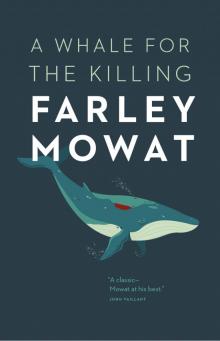 A Whale For The Killing (v5.0)
A Whale For The Killing (v5.0)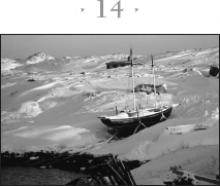 Bay of Spirits
Bay of Spirits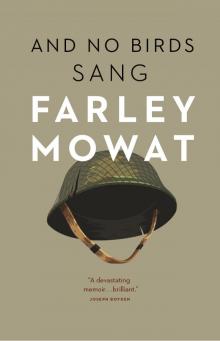 And No Birds Sang (v5.0)
And No Birds Sang (v5.0)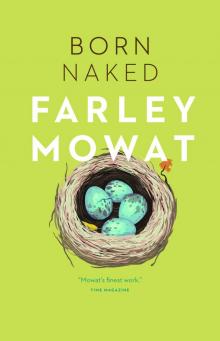 Born Naked
Born Naked